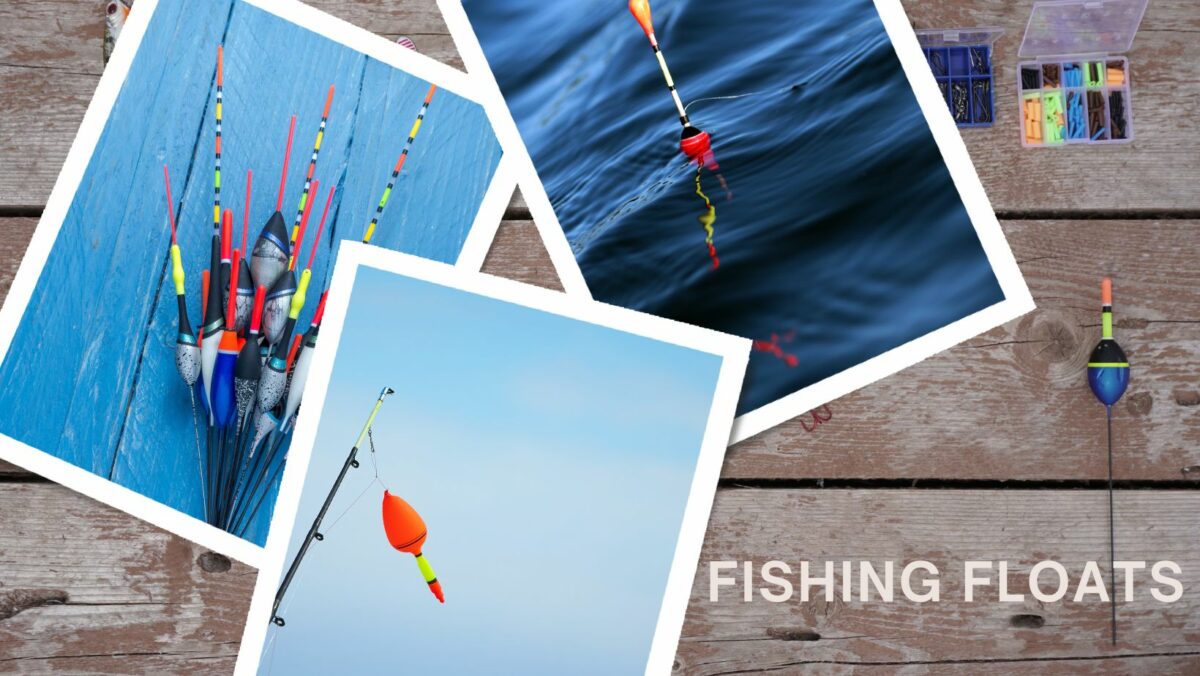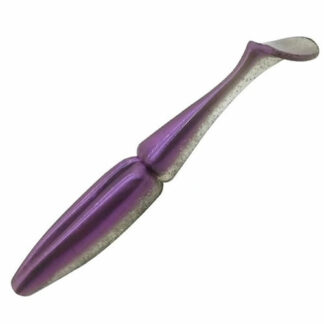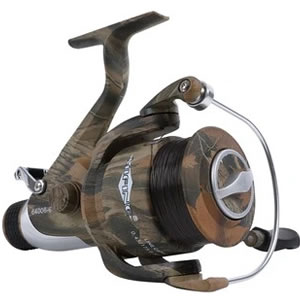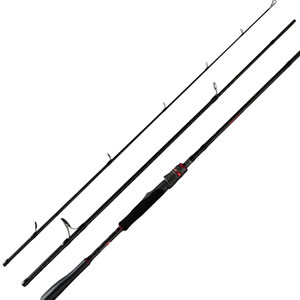Fishing floats, also known as bobbers or floats, are essential tools for anglers across the globe. These small buoyant devices serve several purposes, including indicating when a fish has taken the bait, suspending bait at a certain depth, or marking the location of the fishing line. They come in various shapes, sizes, and materials, each designed for specific fishing conditions and techniques. In this comprehensive guide, we'll explore the diverse types of fishing floats, their characteristics, and their applications.
1. Traditional Cork Floats:
- Material: Cork.
- Shape: Typically cylindrical or oval.
- Usage: Ideal for still-water fishing, especially in freshwater ponds, lakes, and slow-moving rivers.
- Advantages: Natural buoyancy, sensitive to subtle bites, easily visible due to their bright colours.
- Disadvantages: Limited buoyancy in rough waters, prone to waterlogging over time.
2. Plastic Floats:
- Material: Plastic (e.g., PVC, polystyrene).
- Shape: Varied shapes, including round, oval, and elongated.
- Usage: Versatile floats suitable for both freshwater and saltwater fishing in various conditions.
- Advantages: Durable, resistant to waterlogging, available in different sizes and colours, and easily customizable.
- Disadvantages: Less sensitive than traditional cork floats, may require additional weight to maintain stability in strong currents.
3. Balsa Wood Floats:
- Material: Balsa wood.
- Shape: Generally cylindrical or oval.
- Usage: Effective for float fishing in rivers and streams with moderate to fast currents.
- Advantages: Lightweight, sensitive to delicate bites, provides excellent buoyancy, and maintains stability in flowing water.
- Disadvantages: Prone to damage if not properly cared for, may require occasional sealing to prevent water absorption.
4. Foam Floats:
- Material: Closed-cell foam (e.g., EVA foam).
- Shape: Can be round, cylindrical, or egg-shaped.
- Usage: Suitable for both freshwater and saltwater fishing in calm to moderately rough waters.
- Advantages: Lightweight, durable, resistant to water absorption, highly buoyant, and available in various sizes and colours.
- Disadvantages: Less sensitive compared to other materials, may need additional weight in fast currents.
5. Stick Floats:
- Material: Typically made of plastic or balsa wood.
- Shape: Long and slender, resembling a stick.
- Usage: Primarily used in river fishing for presenting bait at a specific depth while allowing it to drift naturally with the current.
- Advantages: Provides precise depth control, suitable for trotting techniques, and offers good visibility.
- Disadvantages: May require additional weights to achieve the desired depth, less suitable for still water fishing.
6. Waggler Floats:
- Material: Plastic or balsa wood.
- Shape: Elongated, with a thicker base and a thinner tip.
- Usage: Commonly employed in still or slow-moving waters for casting long distances and detecting subtle bites.
- Advantages: Offers excellent casting distance, is highly visible, sensitive to bites, and versatile for various fishing methods.
- Disadvantages: Less stable in windy conditions, may require additional weights for balance.
7. Bubble Floats:
- Material: Plastic.
- Shape: Spherical or elongated with a hollow cavity.
- Usage: Used in both freshwater and saltwater for suspending bait at a specific depth without the need for additional weights.
- Advantages: Allows for adjustable depth control, versatile for various fishing techniques, easy to use for beginners.
- Disadvantages: Limited visibility compared to other floats, may spook cautious fish in clear water.
8. Slip Floats:
- Material: Typically plastic or foam.
- Shape: Can vary, but often cylindrical or elongated with a hollow core.
- Usage: Designed for fishing at variable depths, commonly used in still water or slow currents.
- Advantages: Allows for precise depth adjustments, suitable for fishing at different water depths, and versatile for various bait presentations.
- Disadvantages: Requires additional setup with a stopper to prevent sliding, may tangle if not properly managed.
9. Pencil Floats:
- Material: Plastic or balsa wood.
- Shape: Resembles a pencil, long and cylindrical.
- Usage: Primarily used in coarse fishing for presenting bait near the surface or just beneath it.
- Advantages: Offers good visibility, suitable for surface fishing or shallow water, sensitive to subtle movements.
- Disadvantages: Less suitable for deep water or fast currents, may require additional weights for stability.
10. Quill Floats:
- Material: Historically made from bird feathers; modern versions may use plastic or balsa wood.
- Shape: Long and slender, resembling a quill or feather.
- Usage: Traditional float for coarse fishing in rivers and still waters, particularly effective for sensitive bites.
- Advantages: Highly sensitive, provides natural presentation, lightweight.
- Disadvantages: Fragile compared to modern materials, may require delicate handling, and limited availability of traditional feather quills.
11. Slider Floats:
- Material: Typically plastic or foam.
- Shape: Elongated with a cylindrical or torpedo-like design.
- Usage: Designed for fishing in deep waters or strong currents, allowing the float to slide freely along the line.
- Advantages: Provides flexibility in bait presentation, is suitable for long-distance casting, effective in deep water.
- Disadvantages: Requires additional setup with a stopper to prevent sliding beyond the desired depth, may tangle if not properly managed.
12. Pole Floats:
- Material: Plastic or balsa wood.
- Shape: Small and lightweight, often with a slim cylindrical body and a brightly coloured tip.
- Usage: Primarily used in pole fishing or float fishing with rods, offering precise control over bait presentation.
- Advantages: Designed for accurate casting and bait placement, highly sensitive to bites, suitable for finesse fishing techniques.
- Disadvantages: Limited casting distance compared to other floats, requires specialized equipment like a fishing pole or rod.
13. Glow Sticks or Lighted Floats:
- Material: Typically plastic.
- Shape: Varied shapes, often cylindrical or elongated with a slot for inserting a glow stick.
- Usage: Used in low-light conditions or night fishing to provide visibility and attract fish.
- Advantages: Enhances visibility in darkness, attracts fish with light, easy to use and replace glow sticks.
- Disadvantages: Relies on disposable glow sticks, may not be as sensitive as traditional floats, limited effectiveness in clear water.
14. Electronic Floats:
- Material: Plastic or composite materials.
- Shape: Similar to traditional floats but equipped with electronic components such as LED lights or sensors.
- Usage: Modern innovation for enhancing visibility and bite detection, suitable for various fishing conditions.
- Advantages: Offers advanced features like bite alarms, depth sensors, and remote control, enhances fishing experience in low-light or deep water.
- Disadvantages: Higher cost compared to traditional floats, requires batteries or charging, maybe more complex to use.
15. Artisan or Custom Floats:
- Material: Varied, including wood, plastic, or composite materials.
- Shape: Customized designs crafted by skilled artisans or anglers.
- Usage: Tailored for specific fishing preferences, techniques, or conditions.
- Advantages: Offers unique designs and features not found in mass-produced floats, and reflects the angler's personality and style.
- Disadvantages: Higher cost due to customization, limited availability compared to commercial floats, may require ordering from specialized artisans.
In conclusion, fishing floats come in a wide array of types, each suited to different fishing environments, techniques, and preferences. Whether you're fishing in a tranquil lake, a rushing river, or the open sea, choosing the right float can significantly enhance your angling experience and increase your chances of success. Understanding the characteristics and applications of various types of fishing floats is essential for every angler seeking to master the art of float fishing.

 12PCS Feather Floats+1 Float Box Combo£56.67 Add to cart
12PCS Feather Floats+1 Float Box Combo£56.67 Add to cart 2 Rechargeable float batteries plus chargerPrice range: £5.30 through £6.99 Sold Out This product has multiple variants. The options may be chosen on the product page
2 Rechargeable float batteries plus chargerPrice range: £5.30 through £6.99 Sold Out This product has multiple variants. The options may be chosen on the product page 2PCS Reed Float Shallow WaterBobber£9.80 Select options This product has multiple variants. The options may be chosen on the product page
2PCS Reed Float Shallow WaterBobber£9.80 Select options This product has multiple variants. The options may be chosen on the product page 3 PCS Reed Fishing Floats Shallow WaterHard Tail£10.19 Select options This product has multiple variants. The options may be chosen on the product page
3 PCS Reed Fishing Floats Shallow WaterHard Tail£10.19 Select options This product has multiple variants. The options may be chosen on the product page 1Piece Composite Nano Float Spiral Tail£9.86 Select options This product has multiple variants. The options may be chosen on the product page
1Piece Composite Nano Float Spiral Tail£9.86 Select options This product has multiple variants. The options may be chosen on the product page 1PC Composite Nano Fishing Float Big Lead Weight£9.30 Select options This product has multiple variants. The options may be chosen on the product page
1PC Composite Nano Fishing Float Big Lead Weight£9.30 Select options This product has multiple variants. The options may be chosen on the product page 1PC Reed Luminous LED Float£9.10 Select options This product has multiple variants. The options may be chosen on the product page
1PC Reed Luminous LED Float£9.10 Select options This product has multiple variants. The options may be chosen on the product page Ocean Sea Float Bobber High BouyancyPrice range: £8.95 through £9.19 Select options This product has multiple variants. The options may be chosen on the product page
Ocean Sea Float Bobber High BouyancyPrice range: £8.95 through £9.19 Select options This product has multiple variants. The options may be chosen on the product page 3pcs Composite Nano Floats BobbersPrice range: £5.64 through £5.82 Select options This product has multiple variants. The options may be chosen on the product page
3pcs Composite Nano Floats BobbersPrice range: £5.64 through £5.82 Select options This product has multiple variants. The options may be chosen on the product page 3PCS Nano Fishing Floats£8.10 Add to cart
3PCS Nano Fishing Floats£8.10 Add to cart 1PC Reed Luminous LED Fishing Float Deep Water£14.26 Select options This product has multiple variants. The options may be chosen on the product page
1PC Reed Luminous LED Fishing Float Deep Water£14.26 Select options This product has multiple variants. The options may be chosen on the product page 10pcs Nano Floats Shallow Water Bobber£8.82 Add to cart
10pcs Nano Floats Shallow Water Bobber£8.82 Add to cart 5PCS Nano Floats+5 Float Tubes Nano BobberPrice range: £10.26 through £10.32 Select options This product has multiple variants. The options may be chosen on the product page
5PCS Nano Floats+5 Float Tubes Nano BobberPrice range: £10.26 through £10.32 Select options This product has multiple variants. The options may be chosen on the product page Crucian Fishing Float£7.65 Sold Out This product has multiple variants. The options may be chosen on the product page
Crucian Fishing Float£7.65 Sold Out This product has multiple variants. The options may be chosen on the product page 10 pack Fishing Floats+10 Buoy Tubes Big Tail BobberPrice range: £9.46 through £9.86 Select options This product has multiple variants. The options may be chosen on the product page
10 pack Fishing Floats+10 Buoy Tubes Big Tail BobberPrice range: £9.46 through £9.86 Select options This product has multiple variants. The options may be chosen on the product page 3PCS Fresh Water Fishing Floats Flat TailPrice range: £7.47 through £9.28 Select options This product has multiple variants. The options may be chosen on the product page
3PCS Fresh Water Fishing Floats Flat TailPrice range: £7.47 through £9.28 Select options This product has multiple variants. The options may be chosen on the product page 3PCS Reed Fishing Floats Hard TailPrice range: £11.65 through £12.33 Select options This product has multiple variants. The options may be chosen on the product page
3PCS Reed Fishing Floats Hard TailPrice range: £11.65 through £12.33 Select options This product has multiple variants. The options may be chosen on the product page 5PCS Peacock Feather Fishing Floats BobbersPrice range: £11.12 through £12.58 Select options This product has multiple variants. The options may be chosen on the product page
5PCS Peacock Feather Fishing Floats BobbersPrice range: £11.12 through £12.58 Select options This product has multiple variants. The options may be chosen on the product page 3PCS Composite Nano FloatsPrice range: £6.82 through £10.12 Select options This product has multiple variants. The options may be chosen on the product page
3PCS Composite Nano FloatsPrice range: £6.82 through £10.12 Select options This product has multiple variants. The options may be chosen on the product page 1PC Fishing Float Bobber Sensitive£12.03 Select options This product has multiple variants. The options may be chosen on the product page
1PC Fishing Float Bobber Sensitive£12.03 Select options This product has multiple variants. The options may be chosen on the product page 3PCS Nano Floats Pink/BluePrice range: £7.12 through £10.31 Select options This product has multiple variants. The options may be chosen on the product page
3PCS Nano Floats Pink/BluePrice range: £7.12 through £10.31 Select options This product has multiple variants. The options may be chosen on the product page


























